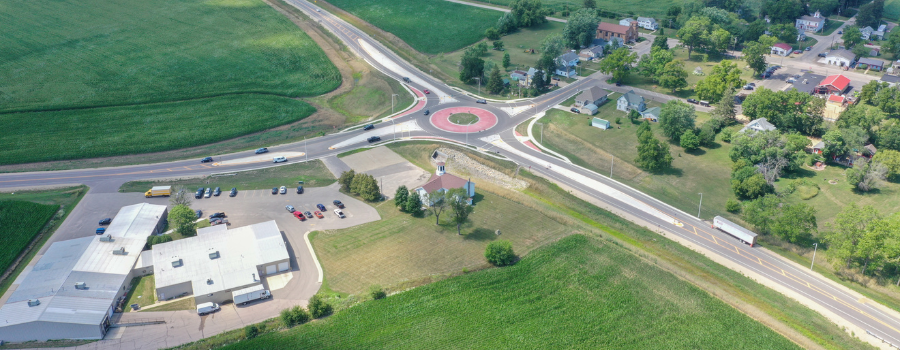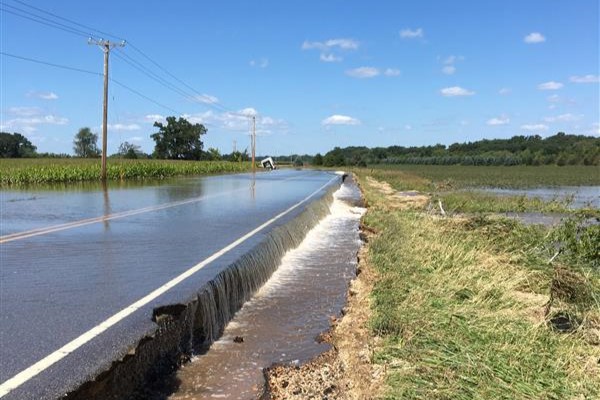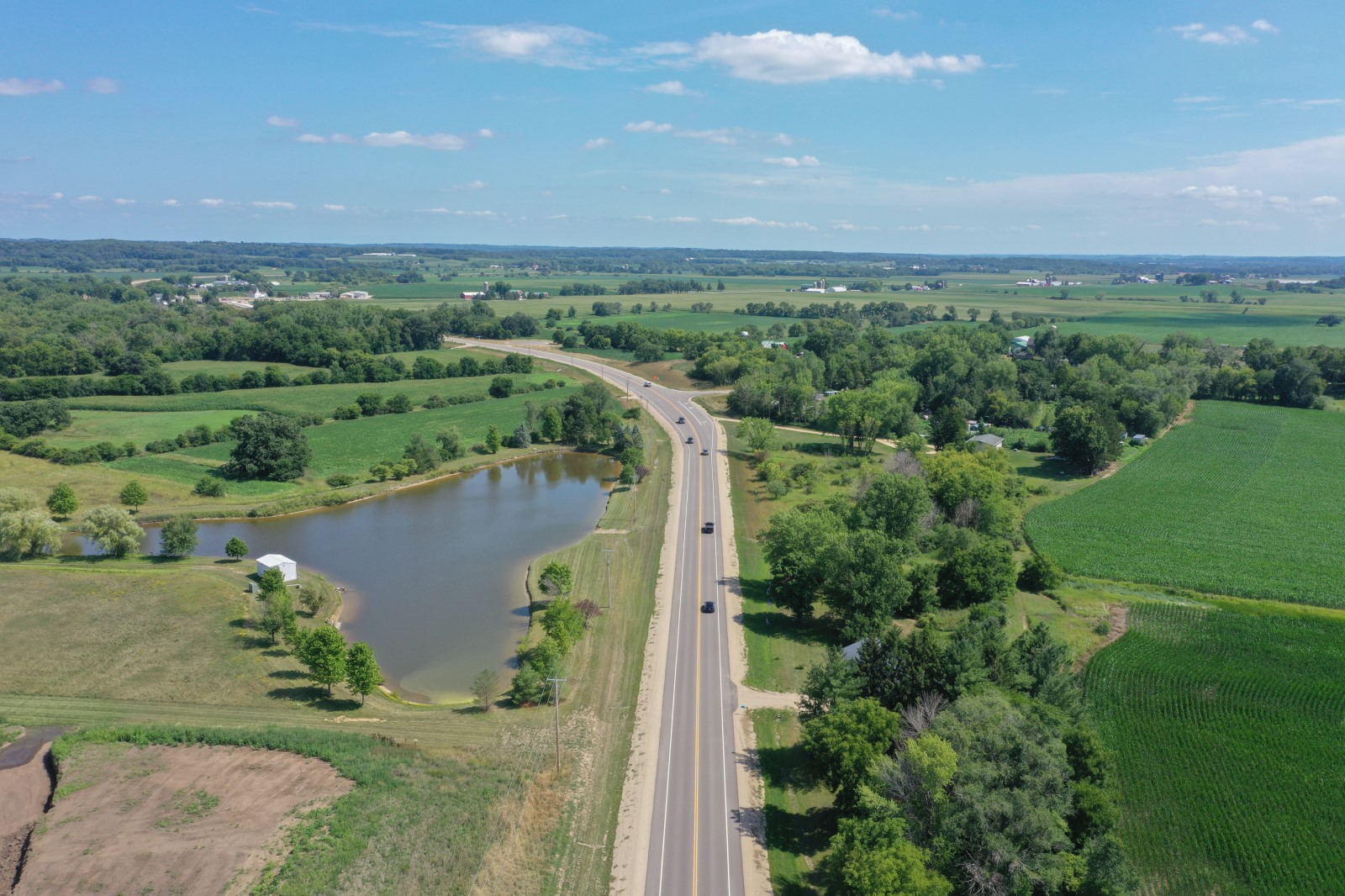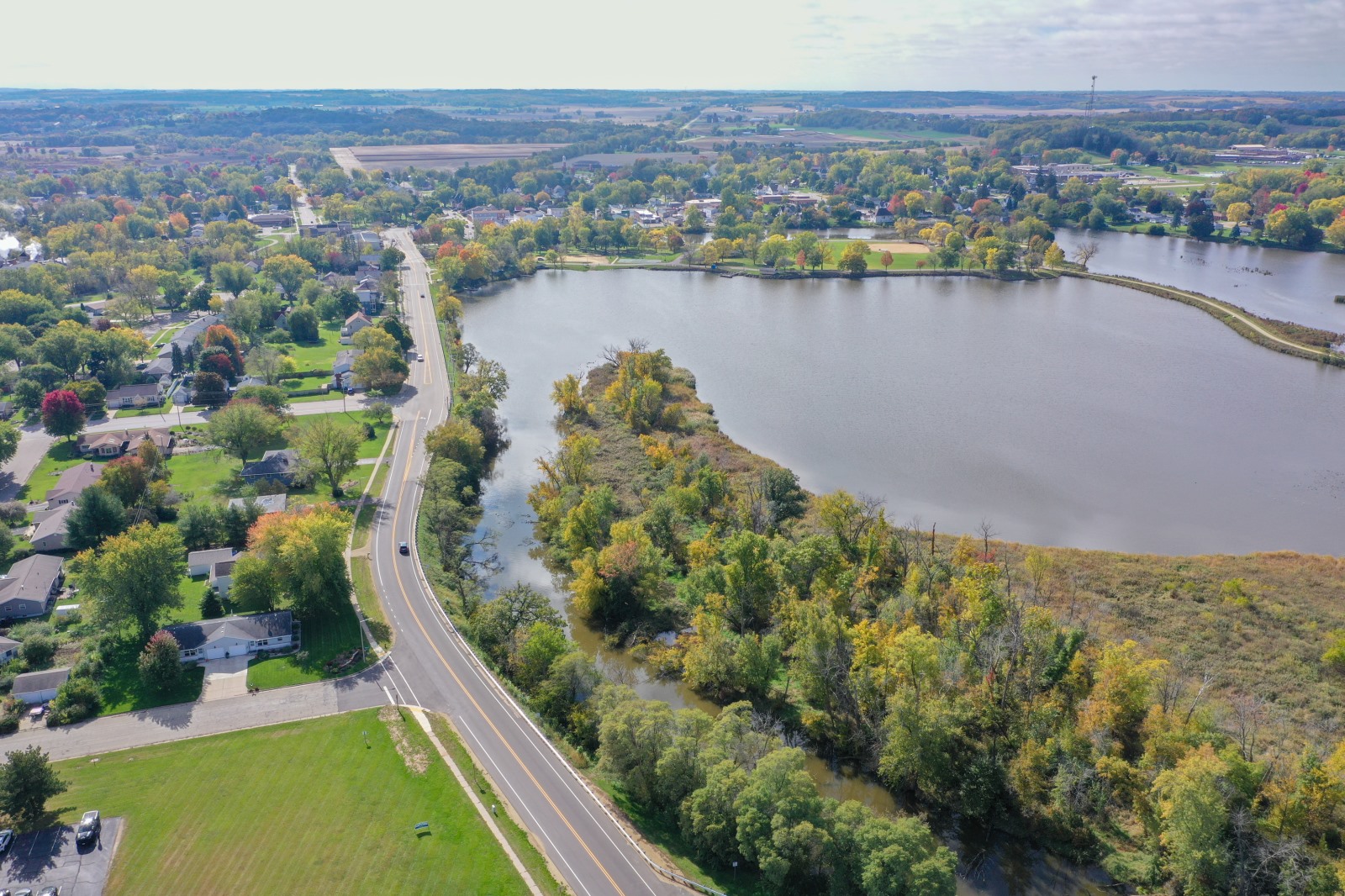Revitalizing STH 69: Balancing Modernization, Safety, and Environmental Stewardship

Written by Brad Groh, PE, JT Engineering
![]()
 JT Engineering, Inc. (JT) undertook the STH 69 rehabilitation and modernization project to transform the existing roadway corridor into a modern, resilient highway. The project’s limits extended from Belleville to Verona, encompassing a historically and archaeologically significant stretch of STH 69 adjacent to the Sugar River. The primary purpose of this project was to address critical issues related to pavement durability, roadway safety, traffic congestion, and drainage concerns while balancing environmental challenges throughout the corridor. The deteriorated condition of STH 69—once labeled “the worst road in Wisconsin” by WKOW Channel 27 News in Madison—prompted comprehensive improvements that enhanced safety and performance while minimizing future flood risks and environmental impacts.
JT Engineering, Inc. (JT) undertook the STH 69 rehabilitation and modernization project to transform the existing roadway corridor into a modern, resilient highway. The project’s limits extended from Belleville to Verona, encompassing a historically and archaeologically significant stretch of STH 69 adjacent to the Sugar River. The primary purpose of this project was to address critical issues related to pavement durability, roadway safety, traffic congestion, and drainage concerns while balancing environmental challenges throughout the corridor. The deteriorated condition of STH 69—once labeled “the worst road in Wisconsin” by WKOW Channel 27 News in Madison—prompted comprehensive improvements that enhanced safety and performance while minimizing future flood risks and environmental impacts.
The design team aimed to revitalize STH 69 with the goals of enhancing public safety and reducing traffic congestion while balancing stakeholder needs and minimizing environmental impacts. The overarching objective was to modernize the roadway, making it more resilient against heavy traffic loads and frequent flooding events.
The team focused on achieving a design that improved safety for motorists, bicyclists, and pedestrians while minimizing impacts to adjacent properties, historic buildings, archaeological sites, parks, wetlands, floodplains, and hazardous material sites. Their approach included upgrading intersections, improving sight distance, realigning roadways, consolidating highway access points, enhancing drainage facilities, and ensuring compliance with ADA standards.
 The new STH 69 project employed a multi-faceted approach prioritizing communication, collaboration, and adherence to environmental constraints. During the design phase, the designers maintained regular communication with key project stakeholders. Close collaboration with the Dane County Parks Department led to features like parking areas, walking paths, and kayak launches, mitigating parkland impacts at two locations along the corridor. Extensive coordination with the Wisconsin Department of Natural Resources (WDNR) involved addressing closure needs, updating highway connections associated with the Badger State Trail and Ice Age Trail, and implementing best practices to avoid impacts on endangered species and the remnant Sugar River Prairie. The design team also worked with WDNR and the U.S. Army Corps of Engineers to obtain an individual Section 404 permit for the project’s unavoidable impacts on the waters of the United States.
The new STH 69 project employed a multi-faceted approach prioritizing communication, collaboration, and adherence to environmental constraints. During the design phase, the designers maintained regular communication with key project stakeholders. Close collaboration with the Dane County Parks Department led to features like parking areas, walking paths, and kayak launches, mitigating parkland impacts at two locations along the corridor. Extensive coordination with the Wisconsin Department of Natural Resources (WDNR) involved addressing closure needs, updating highway connections associated with the Badger State Trail and Ice Age Trail, and implementing best practices to avoid impacts on endangered species and the remnant Sugar River Prairie. The design team also worked with WDNR and the U.S. Army Corps of Engineers to obtain an individual Section 404 permit for the project’s unavoidable impacts on the waters of the United States.

Flooding concerns were addressed by realigning the roadway, elevating the roadway profile adjacent to the Sugar River above the regulatory floodplain, and installing numerous drainage structures. Safety considerations were prioritized through updates to the roadway’s alignment, profile, roadside design elements, and intersections to meet current standards. Intersection improvements included turn lane additions, significant side road realignments, access removals, and a new single-lane roundabout at the STH 69 & CTH PB intersection. The overall pavement structure was revamped with wider shoulders, durable asphalt, and subgrade enhancements, including geogrid. The project’s pavement design also supported a pilot project from WisDOT’s Bureau of Technical Services, which incorporated alternative HMA mixes, test strips, and sensors to evaluate Balanced Mix Design (BMD) performance characteristics.
The cumulative result is a resilient and robust highway that preserves historical elements and critical environmental features while meeting the transportation needs of the future.
About the Guest Blogger
Brad Groh, PE, is Southwest Design Manager at JT Engineering, Inc. JT was founded in 2005 and has now grown to four office locations and over 100 employees. Brad serves as ACEC Wisconsin’s Transportation Steering Committee Chair and is a Leadership Institute graduate.
